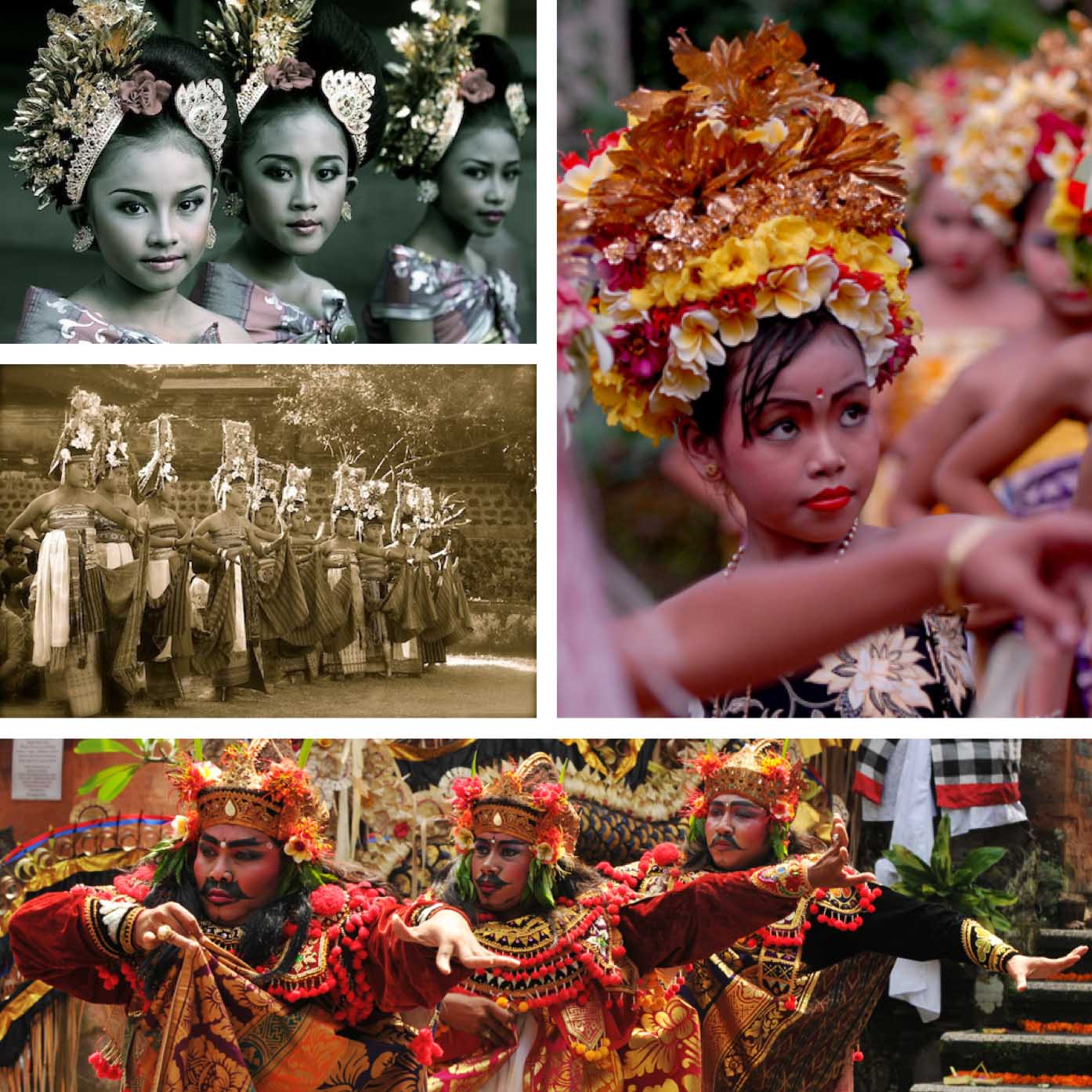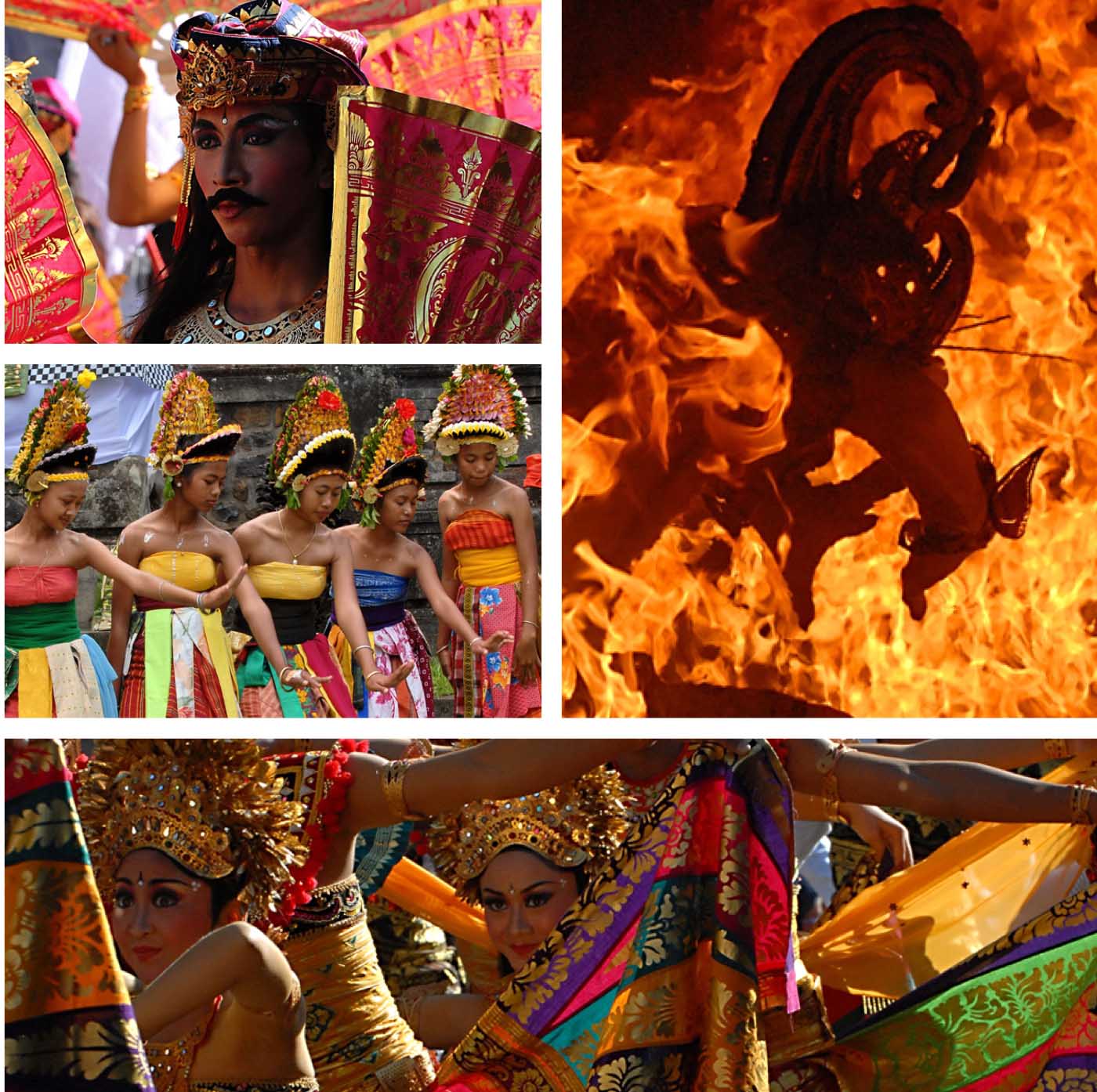Balinese culture is rich in artistic expression, and nowhere is this more apparent than in the many dance performances that take place every day on the island. From devotional dances designed for the gods to exquisitely choreographed performances for show, Bali is one of the top destinations in Asia to see unique traditional dances. The following are just a few of the most popular forms of Balinese dance.

Pendet: A Welcome to the Divine
Pendet is a traditional welcoming dance. It’s usually performed at the start of a ceremony or temple festival. The purpose is to invite the gods and purify the space for upcoming rituals.
Performed by women, Pendet features graceful hand gestures and flowing movements. Dancers scatter flower petals and sprinkle holy water around the area, creating a peaceful and sacred atmosphere.
Barong and Kris: The Eternal Battle of Good and Evil
One of the most thrilling Balinese dances is the Barong and Kris. This dramatic performance depicts the legendary conflict between Barong, the protector, and Rangda, the evil witch.
Dancers wear elaborate costumes, including a lion-like mask for Barong and a terrifying face for Rangda. As the story unfolds, Rangda casts a spell on male dancers. In a trance, they stab themselves with ceremonial daggers, known as kris. Despite the danger, they remain unharmed, believed to be protected by Barong’s spirit.
Legong: Royal Grace in Motion
The Legong dance began in the 19th century in Bali’s royal courts. Known for its beauty and precision, it’s usually performed by young girls who have trained for years.
Every movement in Legong has meaning. Dancers use intricate footwork, delicate finger motions, and expressive facial expressions to convey emotion. Their costumes are equally stunning—golden headpieces, colorful silk wraps, and fluttering fans create a dazzling spectacle.

Kecak and Fire Dance: Chants, Flames, and Legends
Kecak is a truly unique Balinese performance. Unlike most dances, it uses no musical instruments. Instead, a large group of men sit in circles and chant rhythmically, mimicking the sounds of a gamelan orchestra.
While the chanting continues, dancers act out scenes from the epic Ramayana tale. Often, the performance ends with a dancer leaping through a circle of fire, adding an unforgettable element of danger and drama.
Topeng: The Art of the Mask
Topeng means “mask” in Indonesian. In this style of dance, performers wear colorful masks to represent characters from historical and mythological stories.
Topeng dances are both entertaining and meaningful. Dancers shift between humor and seriousness as they portray kings, clowns, and villagers. Skilled performers even adjust their voice and body language to bring each mask to life.
Joged: Flirtation and Festivity
Joged is a lively, social dance seen during village festivals and temple events. It’s playful and interactive, often sparking laughter from the audience.
The dance begins with a woman moving gracefully with a fan. She invites male spectators to join her in the circle. These men try to impress her—and sometimes sneak a kiss—while the crowd cheers and laughs. Joged reflects the joy and sense of community that define Balinese celebrations.
Balinese dance is a powerful blend of tradition, storytelling, and artistry. Each dance offers a window into Bali’s deep spiritual roots and vibrant culture. Whether you’re watching a temple performance or a staged show, the island’s dances are sure to leave a lasting impression.
Photographer – Tony Van Den Haut
Planning Your Stay in Bali
To discuss planning your stay with one of our villa specialists, please get in touch.

